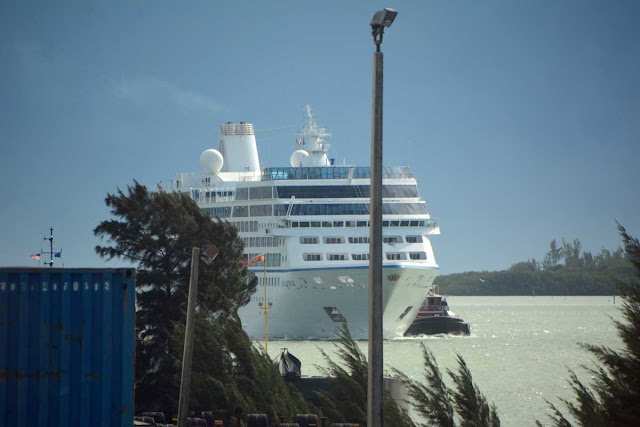Surprisingly, Bonaire means "flat" and not the "good air" you'd thing it would be. And our journey today would show just how flat it is.
We dock after noon because it's a long way from Miami.
Artistic view of gangway.
Some burros run wild on the island.
We took an excursion to some tourist sites. First is Seru Largu, or large hill, with an elevation of 400 feet. Compared to some other volcanic islands of the Caribbean, Bonaire is indeed flat.
Monument on the hill.
Here's a particularly hardy cactus used as a fence. Unlike other cacti, the burros can't knock off the spines and push them over.
Church with Christmas lights
Roundabout Christmas tree
The southern end of island was prized for its salt flats. Cargill continues to extract sea salt here.
The ship pulls up and is loaded with salt.
The parking lot was gravelled with coral. At first I thought it was extruded concrete, but it's actually dead coral broken up and used as paving.
The salt was originally harvested by enslaved Africans. When working the salt flats, they stayed in these slave huts. For sizing, the openings you see are the doors, about 3 feet high. As many as 7 slaves spent the night in one of them.
In olden days, before large cargo ships and huge conveyor belts, there ware four docks for ships to berth and load salt. As ship would arrive, the terminal would raise a flag with one of four colors. That would direct the ship to the corresponding dock marked by a colored pylon.
Flamingoes love the salt flats, or more specifically, the brine shrimp that live there.
About a mile away from where I stood there was a huge colony of flamingos which looks like a long pink beach.
Christmas display along the beach
Final stop, a tourist beach at Sorobon Beach.






























